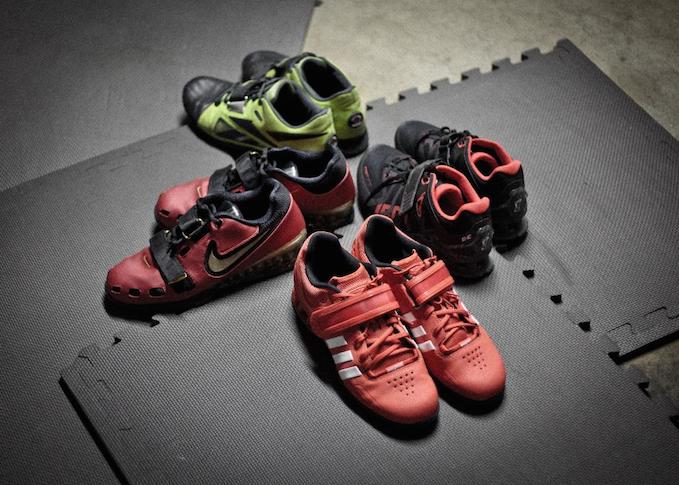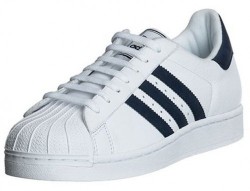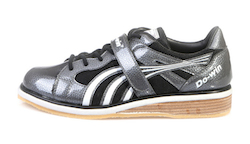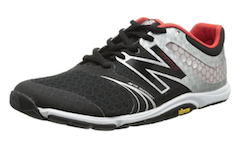The Ultimate Guide To Weightlifting Shoes

Unlike many other sports or hobbies, there isn’t a whole lot that you need to buy to start weight lifting.
Assuming that you are a member of a gym – or have access to a set of weights – you don’t really need any other equipment.
Sure, there are a million accessories you could buy, ranging from apparel to gym equipment, but none of these are essential.
That being said, there are some things that you don’t want to skimp on, especially if you are looking to maximize the effectiveness of your lifts.
One of these is the shoes that you choose to lift in.
This is even more important if you are focusing on certain lifts, like the squat and deadlift. In fact, lifting in the wrong shoes can really hinder your progress – and I see people doing this all the time at the gym without even realizing it.
So, to make sure that you aren’t one of those people, I’ve decided to write this guide that will go over all of the ins and outs of weightlifting shoes. Let’s get right into it.
Why would you need weightlifting shoes?
That’s a very good question.
And in truth, you don’t need them.
Many people work out in all sorts of footwear – ranging from running shoes, to basketball shoes; cross trainers to even flip flops!
Yes, there is a lot of variation here – but I am going to assume here that you want to get the most out of your time in the gym.
I’m also going to assume that you want to avoid unnecessary injuries that will set your progress back!
For this reason, making sure that your footware is appropriate for the specific activity (in this case, weight lifting) makes a whole lot of sense.
And the great thing is that you don’t have to break the bank to do it.
What makes a bad weightlifting shoe?
Let’s start with the type of shoe that you don’t want to wear.
First and foremost, you want to avoid lifting weights in running shoes.
You see, running shoes are designed for a very specific application…namely, running.
For this reason, they often have a gel and air filling, which help reduce the impact on your joints.
Wearing this type of shoes, however, is a terrible idea if you are trying to lift weights – and can be outright dangerous.
Here’s why:
- You won’t lift as much. The soles of running shoes will absorb some of the force that is generated against the floor, as opposed to utilizing it to help you move heavier weights.
- You’ll be less stable. Since the soles of these shoes are squishy, you’ll be more likely to wobble around when doing your sets (especially those that you do standing), making it harder to practice good form.
- You’ll increase your risk of injury. The lack of stability created by these types of shoes will make it harder to balance, which increases the likelihood that you’ll hurt yourself.
Ok, so what makes a good weightlifting shoe?
Now that we’ve gotten the bad part out of the way, let’s focus on what qualities to look for in a good weightlifting shoe.
This depends, in part, on what specific type of gym workouts you are doing.
For instance, the best shoe for a powerlifter will be different from what is most suitable for a regular weightlifter.
That being said, there are certain things that are desirable across the board.
Namely, that you want to be wearing shoes that don’t have compressible soles and that aren’t prone to slipping.
They should also have suitable ankle support, and fit snugly to your feet.
Here are the benefits of wearing a shoe that has these specific characteristics:
- Improved technique. Once you start wearing appropriate weightlifting shoes, you’ll likely find that your technique for various exercises actually improves by itself. For instance, it will be easier to do squats with your weight on your heels.
- Increased strength Since your feet will be planted more firmly on the floor, you’ll find that the amount you can lift often improves. This is especially true for exercises like the squat and the deadlift.
- Greater stability. Better floor traction leads to better balance, which will make you far more stable and in control of your lifts.
Recommendations For Regular Weightlifting
If you’re a regular weight lifter – as I’d imagine that most readers of this blog are – then getting yourself set up with suitable gym shoes is fairly straightforward.
As I mentioned above, you are going to be looking for a flat-bottomed shoe with hard soles. That is by far the most important quality.
Here are some one’s that I’d recommend looking into.
Chuck Taylor All Stars
 These have been a staple of weight lifters for years – and for good reason. They are affordable, very well made, have great support, and will last you for years.
These have been a staple of weight lifters for years – and for good reason. They are affordable, very well made, have great support, and will last you for years.
I would recommend the hightop variety, since they provide better ankle support.
You can pick them up on Amazon here.
Adidas Superstars
 Another good choice is the Adidas superstars.
Another good choice is the Adidas superstars.
Like the Chuck Taylor’s, these shoes have a hard, flat sole, and aren’t too expensive either.
They are a basketball shoe primarily, but many people wear them in the gym for weightlifting, since they are perfectly suited for that.
You can order them online here from Amazon here.
Adidas Powerlift
 Unlike the previous 2 options, the Adidas Powerlift shoes are designed specifically for weightlifting.
Unlike the previous 2 options, the Adidas Powerlift shoes are designed specifically for weightlifting.
They are hard-soled shoes, just like the other 2 options – but they also have a slightly raised heel, which can help with olympic lifts (but can hinder others slightly compared to a completely flat sole)
They also look pretty awesome, so that may be a plus for you if you’re more fashion conscious at the gym.
It is also worth noting that they are more expensive than the 2 previous options, you can order them off Amazon.
Recommendations for Olympic Lifting
If the majority of your workouts are focused on olympic lifts – that is, front squats, power cleans, jerks, and snatches – then you’ll want to get a shoe with greater heel support.
These shoes are raised in the back, from anywhere between .5-1 inch, with a flat-bottomed rubber sole to reduce sliding.
This allows you to get greater depth when doing these lifts. The raised heel will allow you to go deeper on your squats and other such movements, while also keeping your chest up and your hips forward.
It is worth noting, however, that the raised heel can be a disadvantage for other exercises – such as the deadlift, where they have a tendency to make you lean forward too much.
Still, if you are performing mostly olympic lifts, then these are the 2 options that I’d recommend considering.
Adidas Adistar
 These are widely regarded to be one of the best olympic lifting shoes on the market – and are basically the higher-end version of the Powerlift shoes that I mentioned before.
These are widely regarded to be one of the best olympic lifting shoes on the market – and are basically the higher-end version of the Powerlift shoes that I mentioned before.
They have non-compressable soles, and provide the strong heel support that you want for these lifts, along with a secure band around the instep to keep them firmly in place.
In terms of price, they are fairly expensive, costing about $200 if you order off of Amazon.
Rogue Do-win Weightlifting Shoes
 These are another long-time favorite.
These are another long-time favorite.
They have a .75 inch heel height, and a heavy duty strap to keep them in place.
They aren’t as flashy looking as the Adistars – but they are known to be very durable and highly functional.
In addition, they are considerably cheaper, coming in at around $119 if you order from Rogue Fitness.
What about those CrossFit shoes?
 CrossFit has gotten really, really popular.
CrossFit has gotten really, really popular.
Yes, in kind of a cultish way, but I’ll leave that for another post…
However, what this surge of popularity means is that all sorts of CrossFit-specific gear is now being sold.
As a result, there are now a wide-range of CrossFit shoes available, made specifically for the types of lifts that you’ll be doing in CrossFit gyms.
This includes some of the olympic lifts that I mentioned above, in addition to other ‘functional’ movements.
For this reason, they are designed to accommodate both type of movements, and therefore don’t have the raised heel that you’ll find in classic olympic weightlifting shoes.
If you workout at a CrossFit gym, you should check out the New Balance Minimus Cross Trainers and the Reebok CrossFit Lifters.
Should I consider lifting weights barefoot?
While this may sound like a strange option, there are many serious weightlifters who strongly believe that going shoeless is the best kind of shoe.
Now this doesn’t mean that they walk around the gym barefoot all the time.
This is an injury waiting to happen, and would generally be frowned upon by most gyms.
However, there are many people who choose to do certain lifts barefoot – namely squats and deadlifts.
They feel that it provides them with greater stability, while strengthening the small muscles of the foot and improving ankle mobility.
Not ready to go barefoot just yet? Try out a pair of barefoot shoes – like the Vibram Five Fingers.
These basically mimic the feel of being barefoot, while also mitigating the risk that you’ll step on something sharp and cut yourself.
In Summary
As you can see, there are a lot of different options in terms of weightlifting shoes.
And like many things in life, a lot of it comes down to personal preference.
That being said, I would recommend that you at least find a shoe that is suitable for weightlifting – one that has a hard, flat sole.
Also, it is worth noting that if you are doing other things in the gym – especially running on a treadmill – then you should factor that into your decision.
Trying to run in shoes made for olympic lifting is not going to be fun – that’s what your running shoes are for!